Middletown's Hanging Rock offers great ocean views, with prime bird-watching along the way
MIDDLETOWN – Hanging Rock, a long rocky ridge of puddingstone that ends abruptly to form a high overlook with a panoramic view of the ocean, is what hikers talk about after they visit the Norman Bird Sanctuary.
When I hiked there recently, I understood why – it’s spectacular.
But I also enjoyed the trails that took me there. They ran under thick forests, through fields of wildflowers and along the edge of Red Maple Pond. At the far end, a great blue heron strutted through the shallow water and speared a fish with his bill for supper.
I usually avoid private preserves that charge an admission fee. But I’d heard so much about how the Norman Bird Sanctuary attracts painters, photographers, walkers, birders and nature lovers that I decided to give it a try. And I learned later there are group rates, special rates for some hikers and free guided walks on some days. (See Trail Tip).
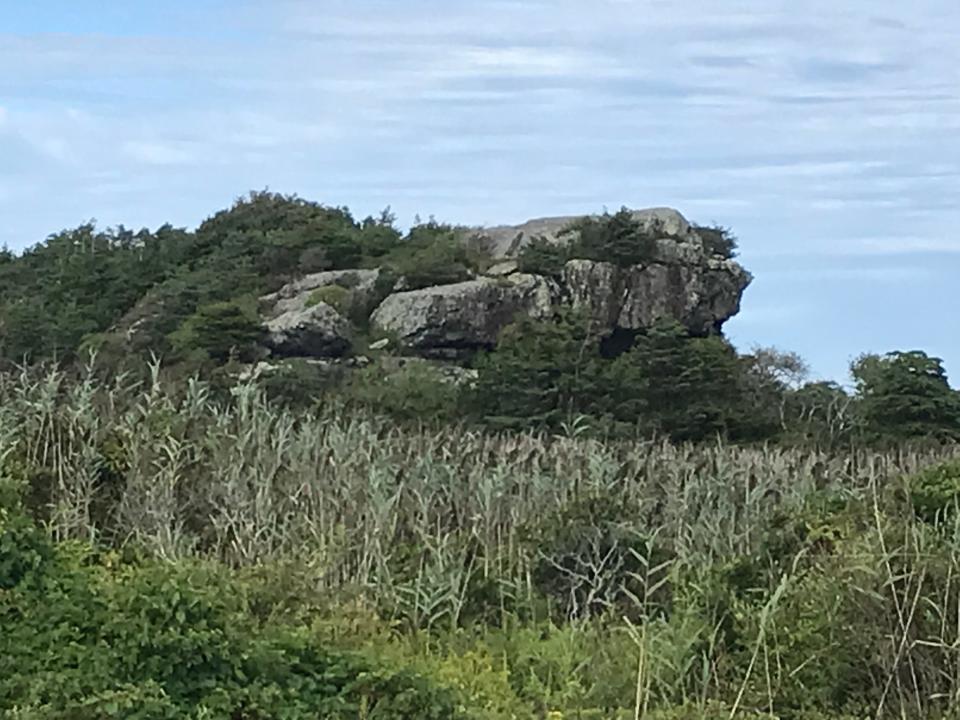
How an artist's bequest created Norman Bird Sanctuary
I set out on a humid afternoon from the sanctuary’s welcome center and stopped at a kiosk to learn some history. In her will in 1949, Mabel Norman Cerio, an artist who lived in a farmhouse on the property, set aside part of Paradise Farm for a preserve “… for the propagation, preservation and protection of birds and where birds and bird life may be observed, studied, taught and enjoyed by lovers of nature …”
Later, that mission was expanded to include protecting the diversity of native plant and wildlife habitats, educating the public about the natural world, and preserving open space.
Continuing on, I took a wide, even dirt and gravel path, called the Universal Trail, that wound through gardens and down a small hillside by a field. Just ahead, a grassy path opens on the right, which leads to the Gardiner-Hopkins Lot, a small historical cemetery bordered by iron railings and cement posts. The oldest headstone was for Elizabeth Gardiner, who died in 1786.
The Gardiners and others, including the Weaver, Stoddard, Allen, King and Norman families, farmed the land in the 1700s and 1800s. They raised field crops, grazed sheep on the ridges and harvested salt hay.
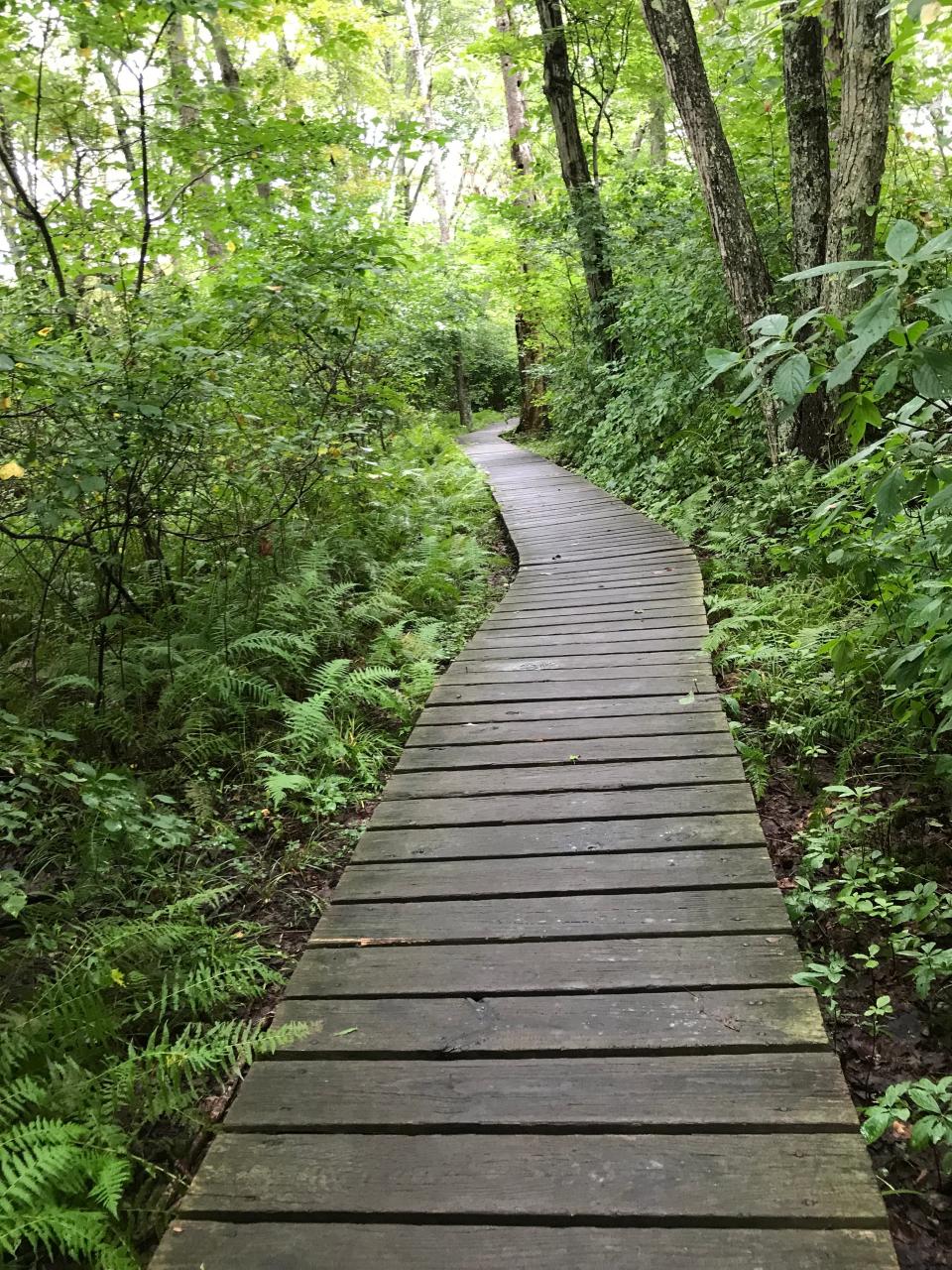
I returned to the trail, which was lined with 300-year-old stone walls and flowering bushes, and followed it to a side spur on the left. The path passed through forests and fields for grassland nesting birds before leading to an abandoned slate quarry, now covered in water. The slate was mined for the rooftops of houses in Newport.
The path then looped back to the Universal Trail and ran along a wide wooden boardwalk that meandered above lowlands. At one point, a maple tree, with a thin fungus called violet-toothed polypore on one side, grows up through the middle of the walkway. Some walkers stop to hug the tree for good luck.
More: These 10 Rhode Island trails should be on your bucket list
A view of Red Maple Pond, and plenty of wildlife
There’s a platform on the right that provides a look through the trees at Red Maple Pond, but a better view is just ahead from a grass-covered earthen dike. Bright green duckweed covered the placid pond, and I noted water marks on submerged rocks that indicated the level was down about a foot. Jewelweed, a home remedy rubbed on the skin for relief from poison ivy, grew along the shore.
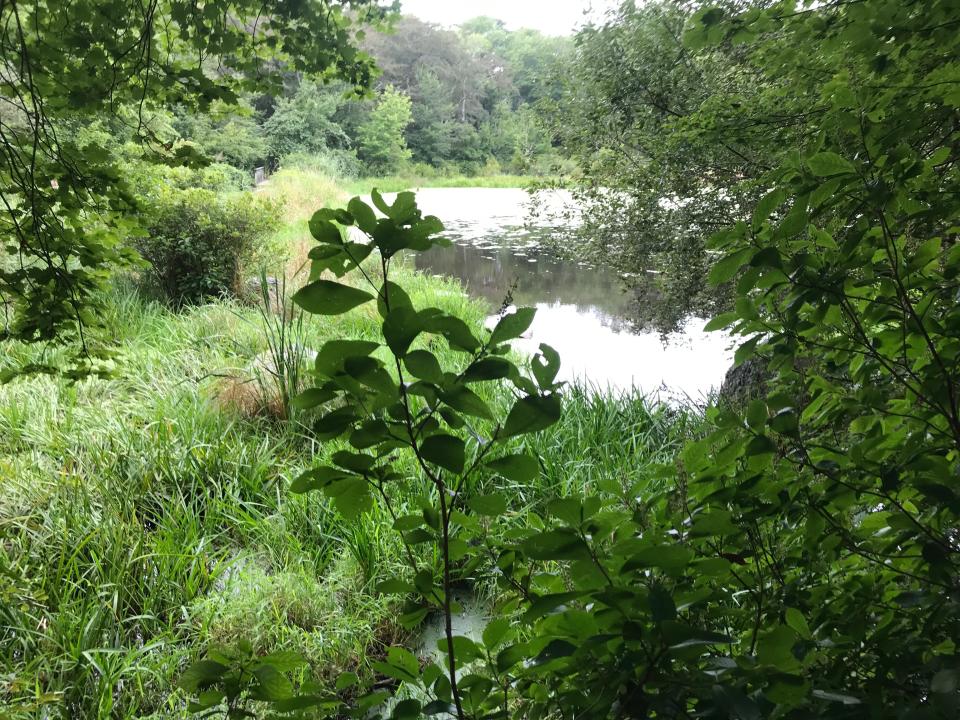
About 40 yards across the shallow water is where I spotted a heron, who paid little attention to me. Hikers also report seeing snapping turtles and mallard ducks.
After studying the pond, I crossed a 30-foot wooden bridge over a concrete dam built in 1984 to regulate the pond’s depth. I watched and listened to water tumbling down a terraced spillway before running downstream.
What's that unusual stone on the trail to Hanging Rock?
The trail then crosses flat steppingstones across a wet area before running through deep woods. There are signs for side trails, but I walked straight ahead. When I came to a fork, I took the left path, which was marked with a sign for Hanging Rock Trail. The trail started to climb, slowly at first and then more steeply over boulders and puddingstone, a rock mass also called Purgatory Conglomerate that is composed of countless pebbles cemented together ages ago.
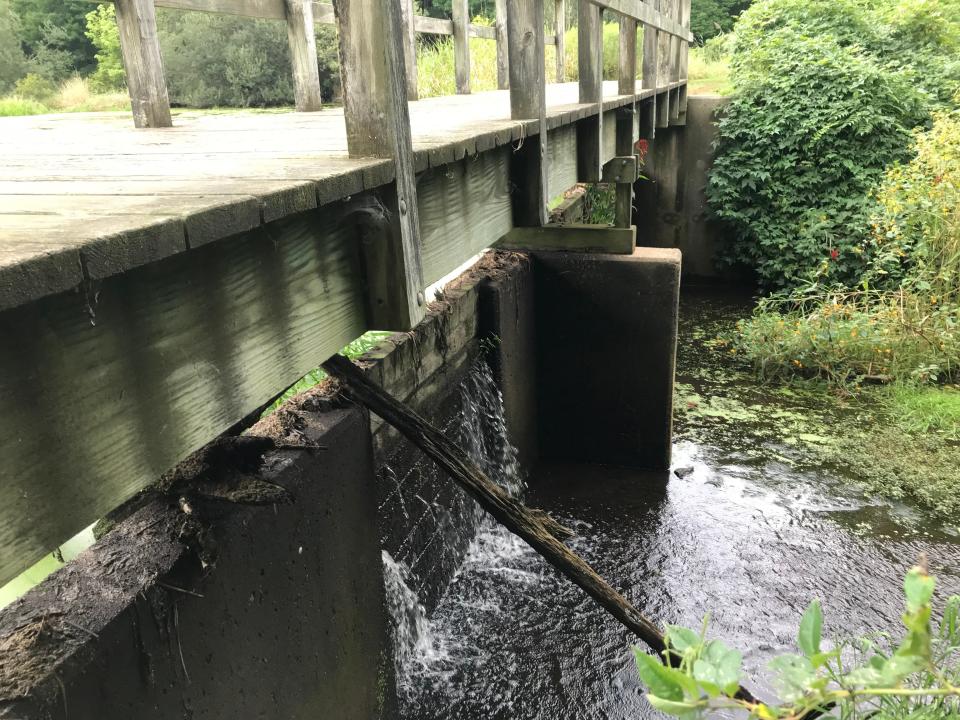
At one point, there are a few steps up a wooden ladder before the trail rises and falls across the puddingstone ridge. I slid down on my backside over a couple of boulders and crawled up over others.
I soon emerged above the vegetation and walked to the end of the massive puddingstone ridge that stopped abruptly about 70 feet above the ground. I sat down, rested and took a long look around me.
To the left, just below the ridge, is Gardiner Pond, named for George Gardiner, an early settler. In the distance, you can see the Sakonnet River portion of Narragansett Bay.
In front of me, waves from the Atlantic Ocean slapped the beach.
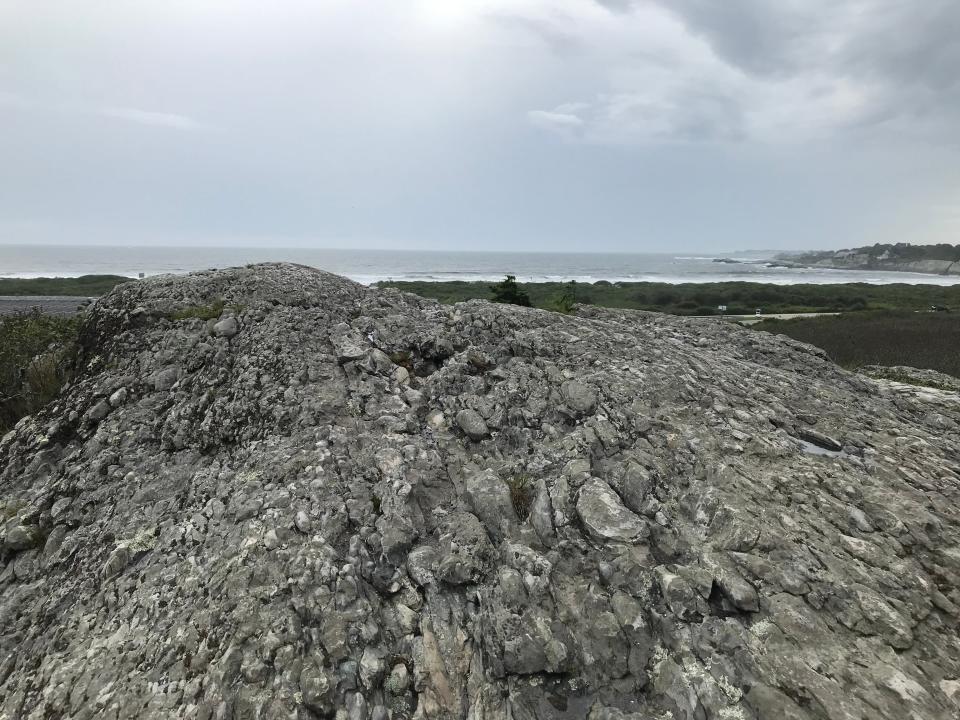
To the right, there’s a reed-filled marsh below Hanging Rock and another ridge a short distance away. To the far west, on a hillside, is St. George's School.
After a good, long stop, I retraced my steps along the ridge to the fork and took the Red Fox Trail. It runs parallel to the Hanging Rock Trail and up another ridge, but this one is made up of diabase, a fine-grained igneous rock. The path runs under oak, red cedar and hickory trees with breaks in the foliage to see water on the left. At one point, two chipmunks scampered across the trail.
When the ridge crests, there’s no cliff, just a curl to the right that put me on the Nelson Trail, another parallel ridge. The path turned north and passed vernal pools and crossed high ground with a few steep climbs.
Walking RI: Rattlesnakes in Johnston? Take a hike through the legends at Snake Den State Park
Nelson Pond is below on the left. Some hikers report seeing stone walls, a sign of old pastureland, below the water’s surface, but I didn’t see any on a cloudy day.
Tour several gardens, and mingle with birds and bees
The trail led to what’s called a ridge connector and eventually back to Red Maple Pond, which I had passed earlier. I followed the path to the welcome center, where I caught up with a short guided tour through several gardens. One, I learned, uses a Hugelkultur process, in which decomposing plant material is layered into a mound and covered with compost and soil. The plants are nourished and hydrated by the self-sustaining activity underground.
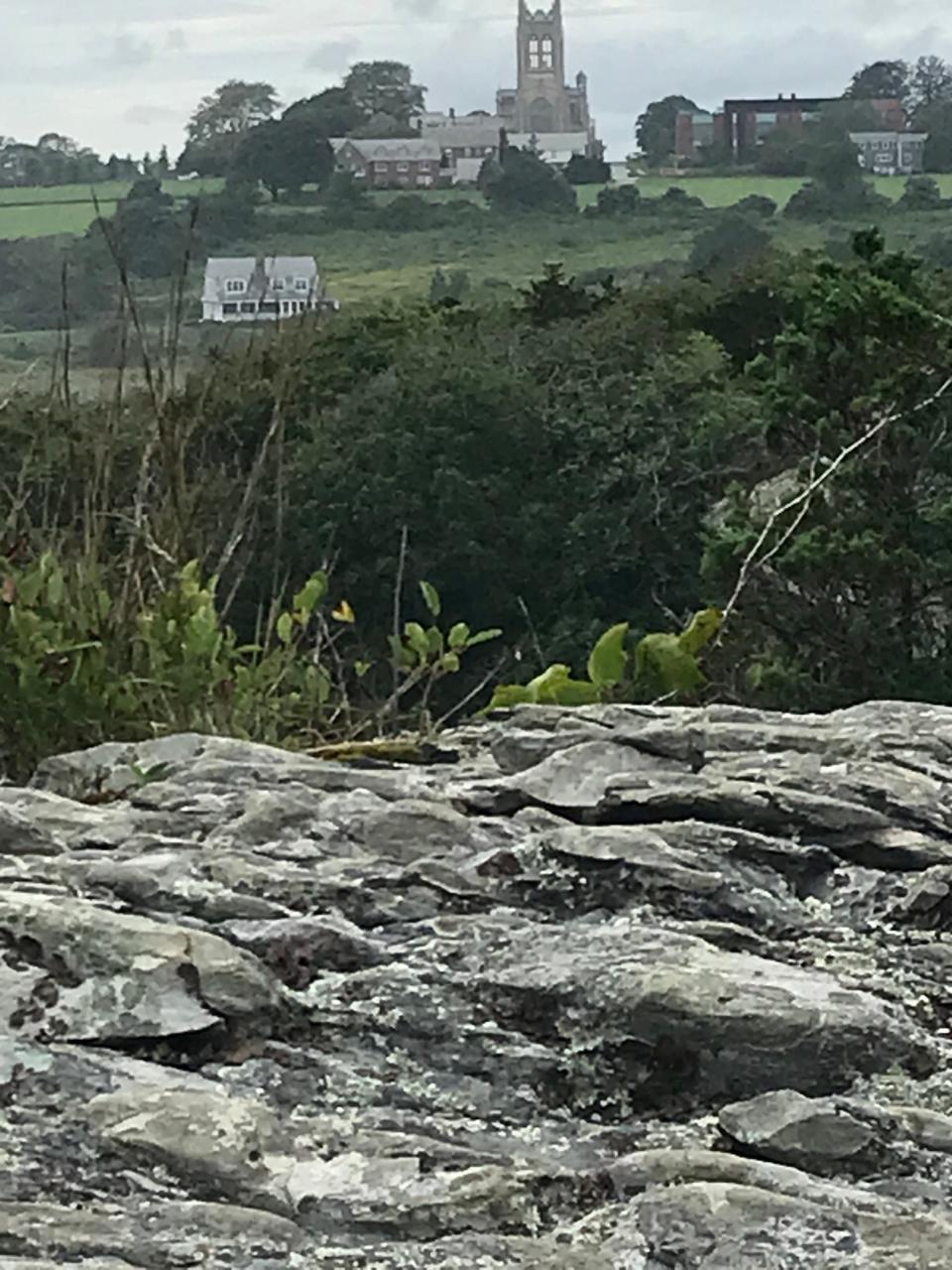
We passed a coop for eight plump chickens. One was named Cosmos. We also spotted two beehives, butterflies fluttering in a meadow of goldenrod and a field where bird boxes attract tree swallows and house wrens.
On the way back to the trailhead, I spotted a deer in the thickets about 20 yards off the path. By the time I returned to my car, I had hiked about 4 miles over 2½ hours.
There are 7 miles of trails over 325 acres at the Norman Bird Sanctuary across 245 acres of forest, 50 acres of grassland, 20 acres of marsh and 10 acres of beach and dunes. Some of the paths I missed run to the north and include grassy fields, black cherry and black locust trees and a historical cemetery.
I’d like to go back to walk those, but the more I think about what makes the sanctuary most interesting, I recall Hanging Rock. It’s unique, and worth another look.
If you go ...
Access: From the south: Follow Route 138 and take Miantonomi Avenue and Green End Avenue until reaching Third Beach Road. Turn right and drive south less than a mile. From the north: Follow Route 138 to Route 138A. Turn left onto Green End Avenue until reaching Third Beach Road, and then proceed as above.
Parking: Available in a lot at the trailhead.
Dogs: Not allowed.
Difficulty: Easy to moderate, with some steep sections on rocky ridges.
Trail Tip
Norman Bird Sanctuary, a private, nonprofit wildlife sanctuary and environmental education center, is open daily from 9 a.m. to 5 p.m. (closed Thanksgiving and Christmas). Admission is $7 for adults, $6 for seniors and military members, and $3 for students with ID and children ages 3-18; under age 3 admitted free. Learn more about free guided walks and other events at normanbirdsanctuary.org.
Lectures and signings for new 'Walking Rhode Island' book
John Kostrzewa’s new book, "Walking Rhode Island: 40 Hikes for Nature and History Lovers With Pictures, GPS Coordinates and Trail Maps," is available at local booksellers and at Amazon.com. He’ll sell and sign books after these presentations and slideshows about his hikes:
Tuesday, Sept. 19: Clark Memorial Library, Carolina, 7 to 8 p.m.
Tuesday, Sept. 26: Rochambeau Library, Providence, 6 to 7 p.m. More information at: tinyurl.com/2353urc4
Thursday, Oct. 5: Charlestown Land Trust, Charlestown, 5 to 6 p.m.
Tuesday, Oct. 10: Barrington Public Library, 6 to 7 p.m. Register at: tinyurl.com/8td5a2kk
Saturday, Oct. 14: Cumberland Land Trust Annual Meeting, Cumberland, 10 a.m.
Wednesday, Oct. 18: Narragansett Public Library, 6 p.m.
John Kostrzewa’s column runs every other Sunday in The Journal’s Rhode Islander pages. He welcomes email at johnekostrzewa@gmail.com.
This article originally appeared on The Providence Journal: Norman Bird Sanctuary's Hanging Rock: Ocean views, prime bird-watching

